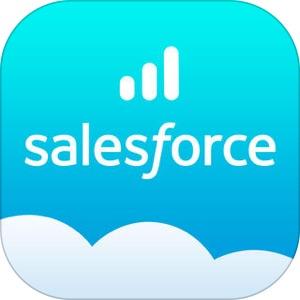Salesforce Enables Seamless Big Data integration through Wave Platform connectors
The original idea behind the Salesforce Wave Analytics platform was to create a way to visualize Salesforce data – but the final product was hardly a surprise given their penchant for tweaking their product ideas.
In May this year, Salesforce announced connectors linking Wave to a number of popular tools for big data analytics and management; bring to light the concept of external data sources being used on the platform as well. Partners included are Hortonworks, Cloudera, Informatica, New Relic, Trifacta and of course, Google.
 Connectors to these platforms will be provided so that salesforce administrators in collaboration with enterprise IT departments can bring in the required data for user access through Wave.
Connectors to these platforms will be provided so that salesforce administrators in collaboration with enterprise IT departments can bring in the required data for user access through Wave.
Even before the connectors were announced, users could still pull external data into Wave, it was just very laborious. With the connectors, users now have an easy way to create a bridge between Salesforce tools for their business requirements and the various platforms providing big data services.
Solving user requirements
The move to provided connectors was in response to customer feedback; enterprises needed an easier way to incorporate non-Salesforce-generated data onto the Wave platform. Solving problems for their users has always been a big part of Salesforce motivation for development, which is why they are so successful in a saturated market such as this one.
Considering that Salesforce applications are in the purview of sales, marketing and service departments while big data is in the purview of data developers, scientists and analysts, it was important to come up with a way for the former to access data from the latter without having to delve into big data themselves.
In such enterprises, the Wave Administrator doubles up as a go-between to enable business users to access the data they need. Connectors simply make this process easier and faster.
Asking the right questions
However, in order to fully benefit from the integration, business users need to know how to ask the right questions, which presents a challenge. End users may not know what questions to ask – in large enterprises, they may not even know the kind of data that exists therein, or the tools being used by the IT department.
If this gap between users and techs is to be really bridged, then communication must be enhanced to a new level – for instance training the sales, service and marketing personnel about some of the big data contained in the enterprise’s databases, and the kind of questions to ask to get exactly what they need.
Suppose, for instance, the sales department needed to combine data from RFID tags with the Salesforce CRM database data for some reason. Prior to having the connectors, this process should be a project on its own. Now, however, the sales team can integrate the data in Wave and run queries to gain new insights.
New opportunities for partners
Being vendors, first, the opportunity to connect with Salesforce expansive customer base was a welcome prospect for the partners of the project – since they now have access to this pool of new potential clients. At the very least, they can provide more meaningful service to the pre-existing clientele who are also Salesforce customers.
It is clear that IT cannot survive in isolation; big data is only meaningful if delivered to the right hands, and that’s what Wave through its partnerships and connectors. Whether or not the idea will take root however still remains to be seen.


